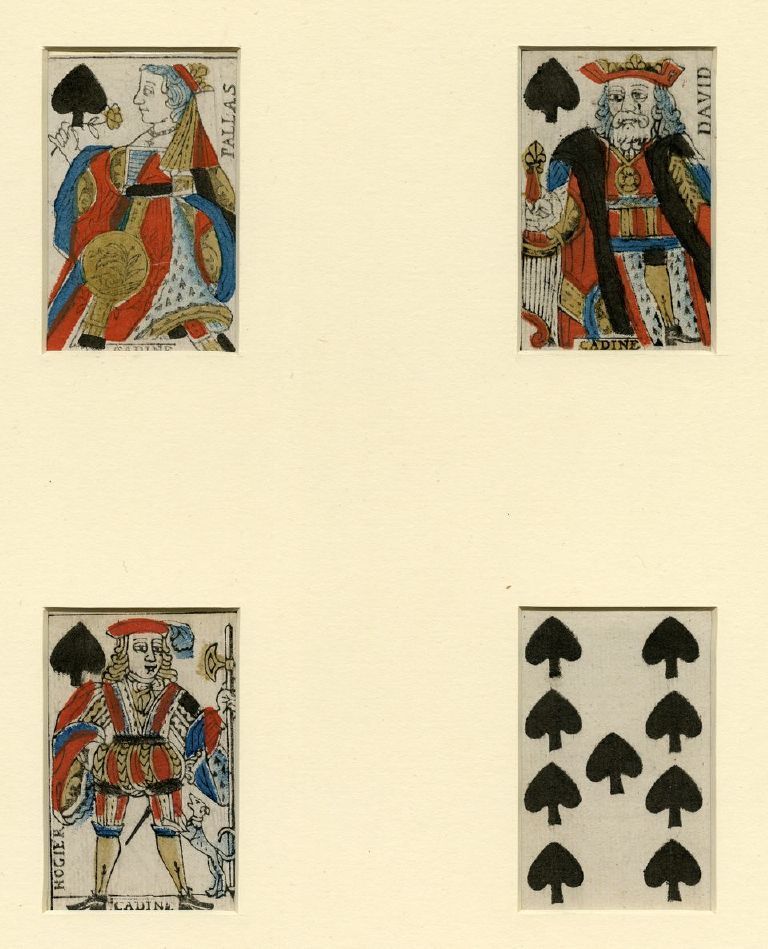Politics and Propaganda : Four Playing Cards
Card-makers throughout history have capitalized on the potential for variety as a way to incorporate additional information and playing cards thus served a number of functions outside of providing a common leisure activity. The printing process made cards widely accessible and easily disseminated, bringing them to the hands of the lower and middle classes.
The purpose for these cards is charged by the images that appear on them. The cards generate strong support of French culture with the use of familiar French iconography. In the sixteenth century, playing cards were used for educational purposes because they subtly taught lessons of propaganda in order to inlay beliefs of the region upon the card users. The strong political undertones and biases were used with six-year old Louis XIV; his guardian, Cardinal Mazarin, taught a strict curriculum, which developed strong political concepts for him.
In 1791, a cataloguing code was created. It was the first national cataloguing code and the form it took was playing cards. The playing cards served as code to provide information about the context of government during the confiscation of the church. The code came with guidelines on how to describe publications in order to label and place them accurately in an orderly system. It was a way for French government to issue order among inventory of its property. This aided the French in eventually reaching their goal of providing the French with a Constitution.

